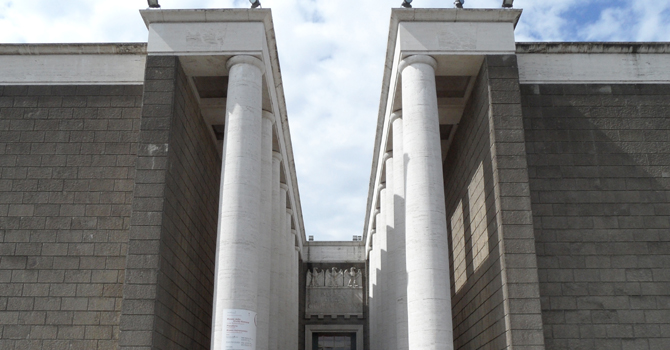The Building
Il complesso che ospita il museo fu progettato dagli architetti Aschieri, Bernardini, Pascoletti e Peressutti, vincitori di uno dei concorsi banditi per la costruzione degli edifici più rilevanti dell'Esposizione Universale di Roma nel 1942.
Tra i progettisti ebbe un ruolo preminente Pietro Aschieri che, con la creazione di una struttura maestosa e un po' magniloquente, potè esprimere appieno le sue concezioni, ispirate a un classicismo di impronta scenografica.

The museum is temporarily closed for renovations.
The complex which houses the museum was designed by the architects Aschieri, Bernardini, Pascoletti and Peressutti, who won one of the public competitions for the most outstanding buildings at the Universal Exhibition of Rome in 1942.
Among the designers, Pietro Aschieri was pre-eminent, and in the creation of a majestic and magniloquent structure, was able fully to express his ideas, inspired by a classicism mixed with scenography.
The architectural complex is made up of two imposing structures connected in a symmetrical arrangement in a long portico of travertine columns, which delimit the piazza created and surrounded by the structure and give it scenographic depth.
Onto the centre of the protrusions, set obliquely to the piazza, open two monumental entrances, each of which leads to a narrow embedded corridor, flanked by solemn travertine columns. These openings form an interruption in the compact mass of the walls, which are immense blind surfaces of dressed blocks of bugnate worked dark tufo, surmounted by a travertine cornice. The static nature of the external space is in contrasted to the outstanding dynamism of the internal space, which is articulated into an irregular sequence of rooms of various shapes and sizes.
The Planetario is situated into the same building that accommodates the
Museo della Civiltà Romana





































